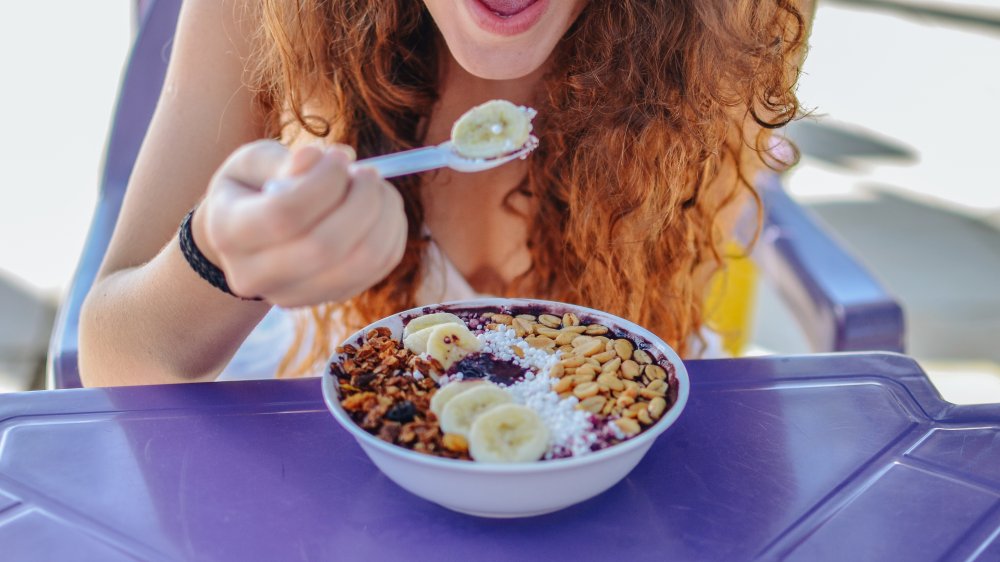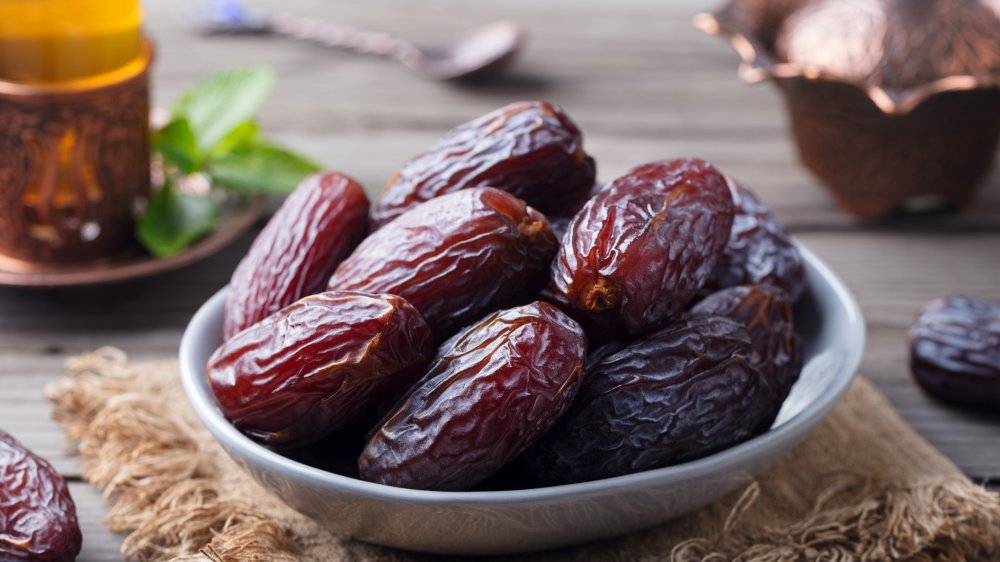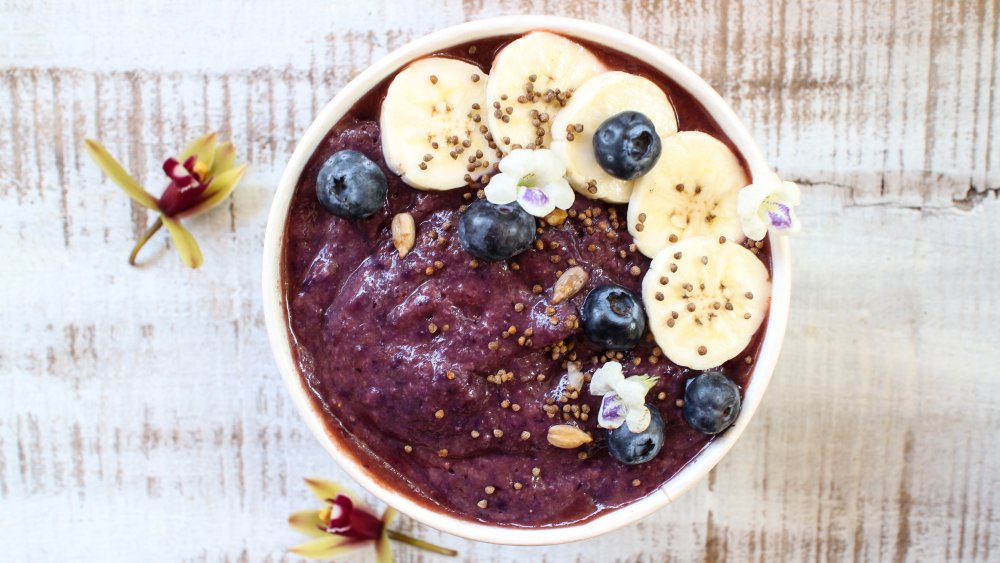The Secret Ingredient You Should Be Adding To Your Acai Bowl
Are you addicted to açaí bowls? If so, you're not alone. Spoon University singled these out as a food phenomenon that's likely past the trendy stage and may well be here to stay. For the uninitiated, an açaí bowl is basically a "smoothie on steroids" — a milk or yogurt and fruit concoction boosted with its eponymous purple super fruit, topped with peanut butter, honey, granola, coconut and/or whatever else is healthy-appearing yet highly Instagrammable, and served up with a spoon rather than a straw.
While açaí bowls are undoubtedly nutritious, the commercially-prepared ones (now even available at Costco!) tend to be loaded with sugar. On the low end, an açaí bowl can contain about 26 grams of sugar, which exceeds the American Heart Association's recommended daily limit of 25 grams (and is also more than the 25 grams of sugar contained in an entire pint of Ben & Jerry's chocolate ice cream). Depending on toppings, your bowl might soar up to 65+ grams, which kind of negates the whole "healthy" aspect. With this in mind, you probably don't want to eat an açaí bowl every day.
But if you'd like to enjoy a homemade açaí bowl that's as nutritious as it is delicious, there is a way to circumvent the sugar problem: Organic Authority suggests using Medjool dates as a natural sweetener.
What are Medjool dates and why are they healthy?
Medjool dates are a stone fruit native to Morocco but now grown throughout the Middle East as well as in Asia, Africa, and warmer regions of the United States. They're usually sold dried, which increases their natural sugar content, but they are not dehydrated so they retain enough softness to be easily blended. Medjool dates are a great source of fiber, with just two of them providing 3.2 grams. They are also, according to Healthline, high in antioxidants that can help protect against heart disease, cancer, and brain ailments.
Although high in sugar, Medjool dates have a low glycemic index. This means they're not likely to cause your blood sugar to spike and lead to a potentially dangerous "sugar rush" (and subsequent crash).
How to use Medjool dates in your acai bowl
The Organic Authority recipe calls for using two Medjool dates along with unsweetened almond milk, unsweetened açaí puree, strawberries, bananas, and a little vanilla extract. It also suggests using homemade, maple syrup-sweetened granola as a crunchy topping along with unsweetened coconut plus additional strawberries and banana, although peanut or almond butter, chia seeds, and passion fruit are also suggested as topping options. The base smoothie recipe (sans toppings) is said to contain just 14 grams of sugar, so it really is quite a bit healthier than most other açaí bowls out there — at least, if you are able to restrain yourself from going crazy with the garnishes.


